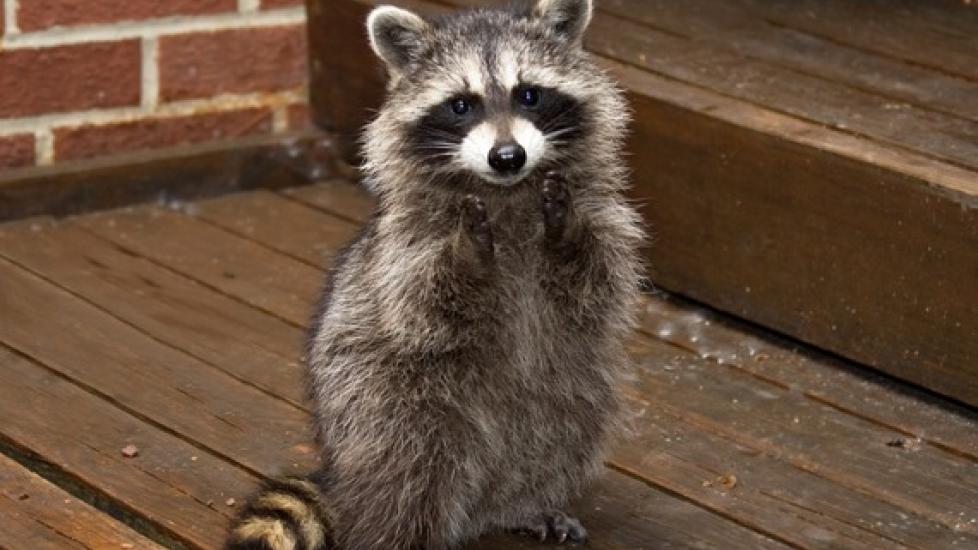Diagnosing and Treating Raccoon Parasite Infection
American wildlife concerns generally revolve around the potential for rabies or other infections in humans. Rabies from raccoons is extremely rare. So, most of us are tolerant of raccoons in our environment. I have delighted in watching a “family,” “pack,” or whatever invade my yard periodically. They dig the soil for insects and use my pool for cleaning and frolicking. Fortunately, they feast, play and move on, repeating the episode yearly. Their health threat comes when they decide to stay in a desired location.
Perhaps you remember an episode on the TV series House. A young girl had neurological signs that perplexed Dr. House and his eager associates. Eventually they examined her eyes and discovered a worm that was eventually identified as a parasite found in raccoons. It turned out that this young girl’s pre-school was home to raccoons that contaminated the play area with their feces (poop).
Raccoons and Internal Parasites
Raccoons are the preferential host for an intestinal parasite called Baylisacaris procyonis. It is thought that 95 percent of raccoons harbor this parasite. The eggs of the intestinal worms are passed in the feces. Raccoons, like dogs, cats, and other mammals, establish latrines where they repeatedly defecate (bowel movements). These areas become concentrated with parasite eggs. The eggs become infectious in 2-4 weeks in the soil or sand.
Recommended Pet Products
- Nutramax Proviable Probiotics & Prebiotics Digestive Health Supplement for Dogs & Cats, 160 count$89.98Chewy Price
- Fera Pets USDA Organic Pumpkin Plus Fiber Support for Dogs & Cats, 90 servings$34.95Chewy Price
- All Four Paws Comfy Cone E-Collar for Dogs & Cats, Black, Small$20.24Chewy Price
- Virbac Epi-Otic Advanced Ear Cleaner for Dogs & Cats, 4-fl oz bottle$13.19Chewy Price
The Route of Infection for the Racoon Parasite
Infection with Baylisacaris is fecal-oral. Eating the aged (2-4 weeks) feces or ingesting soil contaminated by the aged feces results in infection. In the House episode the young girl was exposed in her playground and probably ate without washing her hands. But raccoons are not the only source of infection for humans.
Dogs that eat raccoon feces or contaminated soil can also become infected with the parasite. For dogs, the infection does not cause disease. The worms live happily without harming the dog, but the dog’s feces are full of parasite eggs that are a risk for family members. In other words, a dog’s access to a raccoon latrine adds another layer of potential infection.
The Paradox of Treating the Racoon Parasite
Treatment with anti-parasitic drugs is curative for Baylisascris infection. The limiting factor is making the diagnosis. The House episode demonstrated the difficulty in establishing the cause for the symptoms. Parents and physicians must be alert to environmental potential or diagnostics may be unreasonably delayed. Queries about various environmental settings are possibly the most over-looked area of history analysis in both human and veterinary exams.
Routine fecal examinations of dog feces can also help. Identification of Baylisascaris eggs in the dog's feces can alert veterinarians to risk to family members. It may also aid in the diagnosis of stricken family members.
Environmental Treatment for the Racoon Parasite
Like other parasitic eggs, Baylisascaris eggs are vary hardy. They resist most environmental treatment attempts to neutralize their infectivity. The House episode showed bulldozers digging over a foot in depth. Military flamethrowers followed the digging. The point was to emphasize the difficulty in sterilizing the environment for future children. Parasites have adapted and persist in the environment. The best control is to discourage raccoon habitation. Without a food source they will move on. Don’t give them a reason to establish a local latrine.

Dr. Ken Tudor
Image: Denise Kappa / Shutterstock




